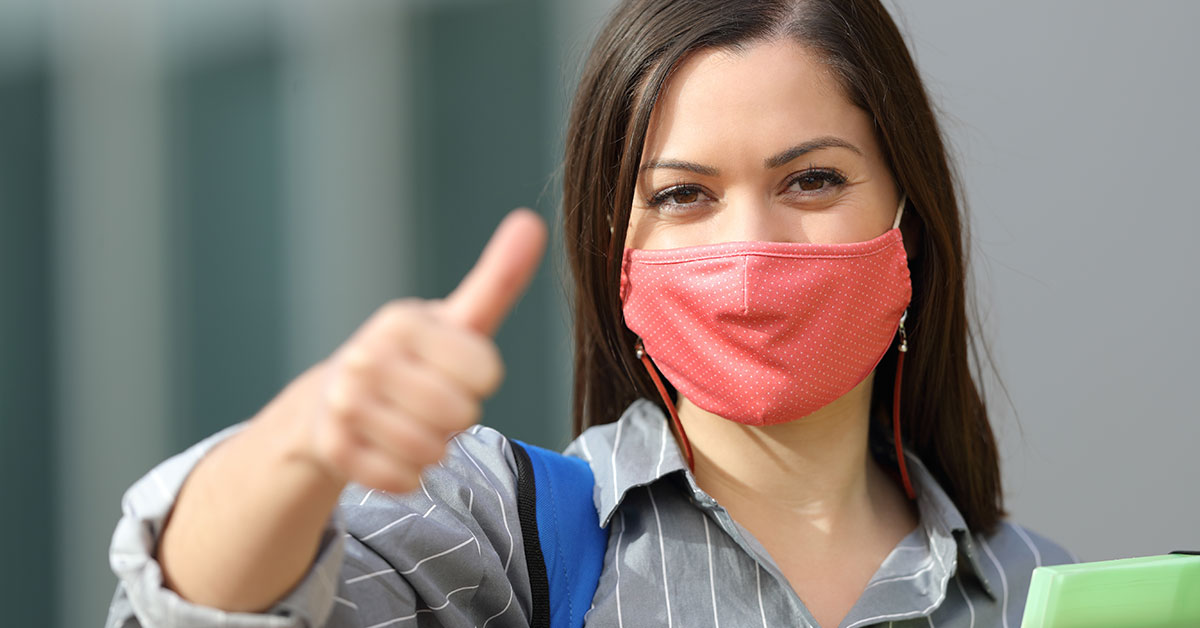I’d be lying if I said I wasn’t stressed. Who wouldn’t be after spending over a month in quarantine? I miss spending time with my friends and extended family. I miss going out to eat and shopping at local businesses. I’m tired of spending so much time inside, and I’m REALLY tired of wearing a mask and latex gloves whenever I do manage to get outdoors. And while we’ve seen some encouraging signs that our social distancing efforts are working to prevent the spread of COVID-19, most experts agree that we’re only halfway through the marathon.
All this is to say: I get it. I understand if you’re frustrated. We’re all living under incredibly stressful conditions, and it’s hard to look ahead and see how much farther we have to go. We need to be mindful of our emotional health. We also need to make sure our emotions don’t drive us to make thoughtless decisions during a pandemic. Above all, we need to be present for students and children who are still grappling with the emotional side-effects of our current situation. That means learning how to promote healthy SEL.
Understanding SEL
SEL (or Social-Emotional Learning) is defined by the Collaborative for Academic, Social, and Emotional Learning, (CASEL) as,
“How children and adults learn to understand and manage emotions, set goals, show empathy for others, establish positive relationships, and make responsible decisions.”
There are five aspects of social-emotional learning: self-awareness, self-management, social awareness, relationship skills, and responsible decision-making. Normally, educators would find ways to model these qualities while in the classroom, but these are not normal times. Instead, we must help our students master these virtues from a remote environment. It won’t be easy, but there are things you can do to put your students on the right path, and perhaps even give them a positive outlet for their emotions.
Self-Awareness
Self-awareness is the conscious understanding of your own feelings, motives, beliefs, and desires. It doesn’t just give us a clearer view of ourselves, it allows us to recognize our strengths and our weaknesses. One way you can help your students build self-awareness is to have them set goals. Ask them to consider a skill or subject they’re not particularly good at, then encourage them to make a goal for improvement. Have them record their process, their feelings and outlook, then share it with the rest of their peers via Zoom or email. Even if the result isn’t perfect, the act itself can go a long way toward building maturity.
Self-Management
Self-management is the ability to control one’s emotions and take responsibility for their own behavior. Right now, many young students are probably having difficulty managing their fears, frustrations, or melancholy. One method for helping them organize their emotions is to give them a physical sign. In the blog, Cult of Pedagogy, Wendy Turner discusses how she gave her students colored wrist bands so they could communicate their emotions and even ended up using them herself. Having students create a space at home where they can decompress is also useful, as it gives them permission to vent their emotions before engaging with people again.
Social Awareness
This aspect involves a student’s ability to accept and understand different ideas, perspectives, and beliefs. It’s of particular importance at the moment, since the stress of COVID-19 has caused many people to retreat into familiar worldviews and online spaces. Such conditions can make people (especially students) less tolerant and encourage the spread of misinformation. Instead of succumbing to fear, encourage students to be the helpers in their community. Have them search for ways they can help their friends an neighbors, be it writing notes to the elderly, donating to organizations like Feeding America, or simply creating positive media to share online.
Relationship Skills
All relationships take work. Whether it’s building a friendship or making a professional connection, students need to learn the art of healthy communication. This involves navigating conflict, cooperating with others, and negotiating responsibility. One way you can emphasize these qualities is to guide your students through a virtual PBL unit like Blue Apple’s Prevent the Spread. Prevent the Spread helps students understand the current pandemic by teaching them about germs, then gets them collaborating with unique public service announcements. Whether by email, zoom, or good old-fashioned letters, students will start communicating with classmates, and that’s really where it all begins.
Responsible Decision-Making
This last one is pretty self-explanatory. Students need to recognize that their actions have consequences and making reckless decisions (particularly in the midst of a global pandemic) can have serious repercussions. What’s more, you can easily tie Responsible Decision-Making to Relationship Skills and Social Awareness by showing students that their choices don’t simply affect them. Try discussing COVID-19 with your students and ask them what they find the most difficult about the situation. Then, follow up with questions designed to get them thinking about personal responsibility.
- Would you still go outside if it meant someone else someone else got sick?
- What would happen if you got infected and gave the virus to your Mom or Dad?
- Won’t going out in public make the virus last longer?
We still have many hard days ahead, but I’m confidant that our students and communities will overcome this challenge. We simply need to be patient, positive, and use to tools available to us. How to promote healthy SEL is one such tool, and when we give our students the guidance they need to process their feelings, they can transform those emotions into a powerful force for good.

